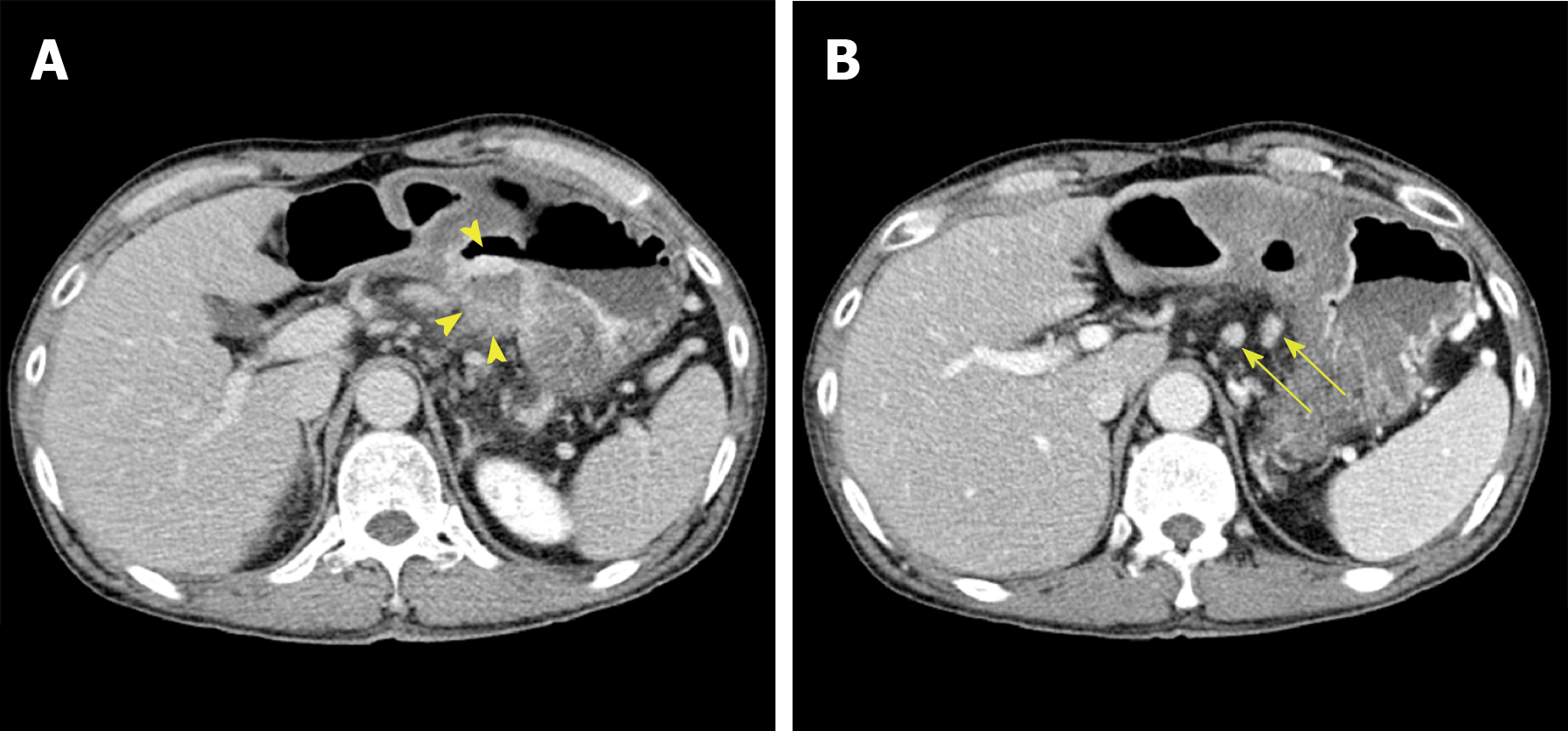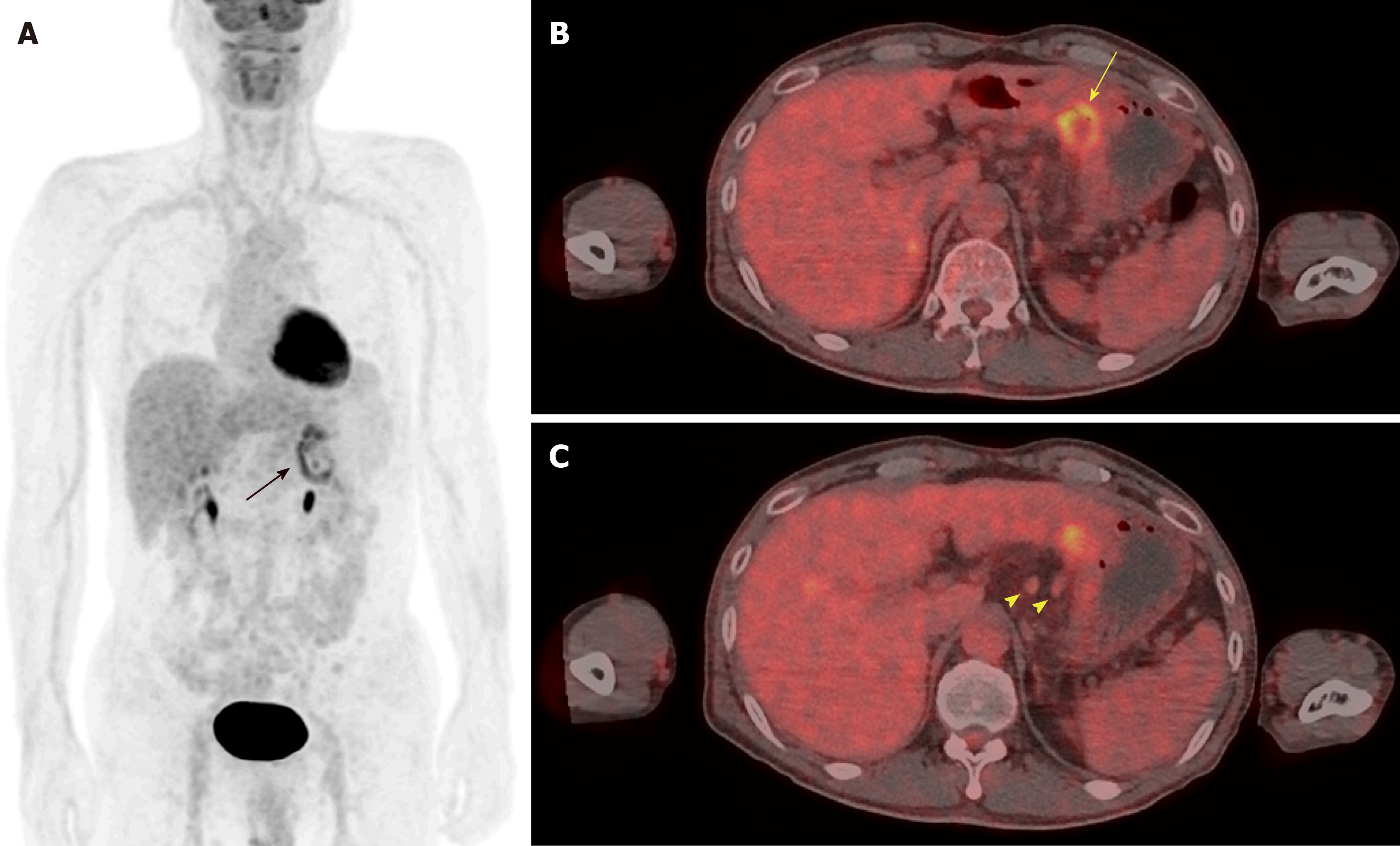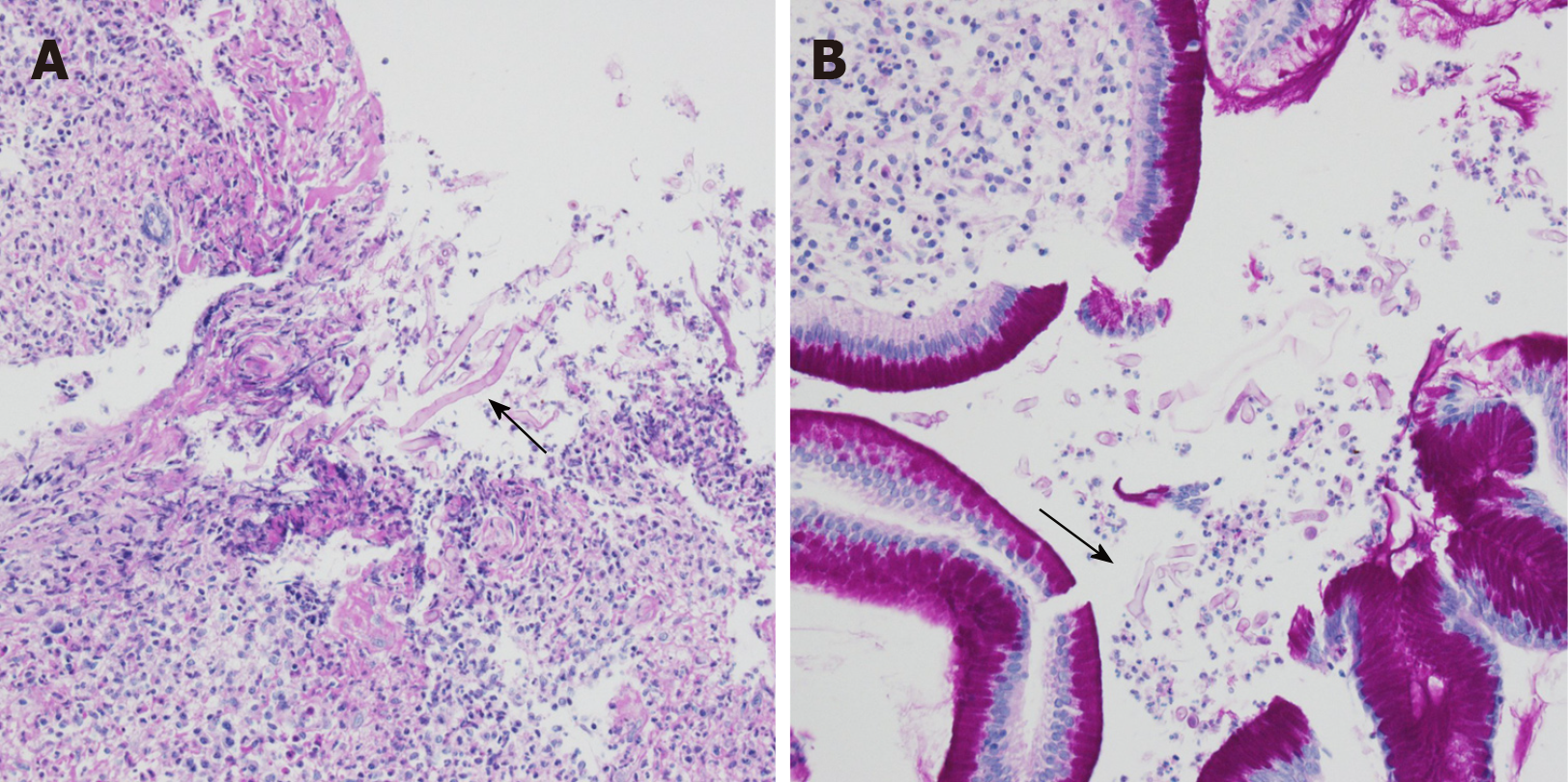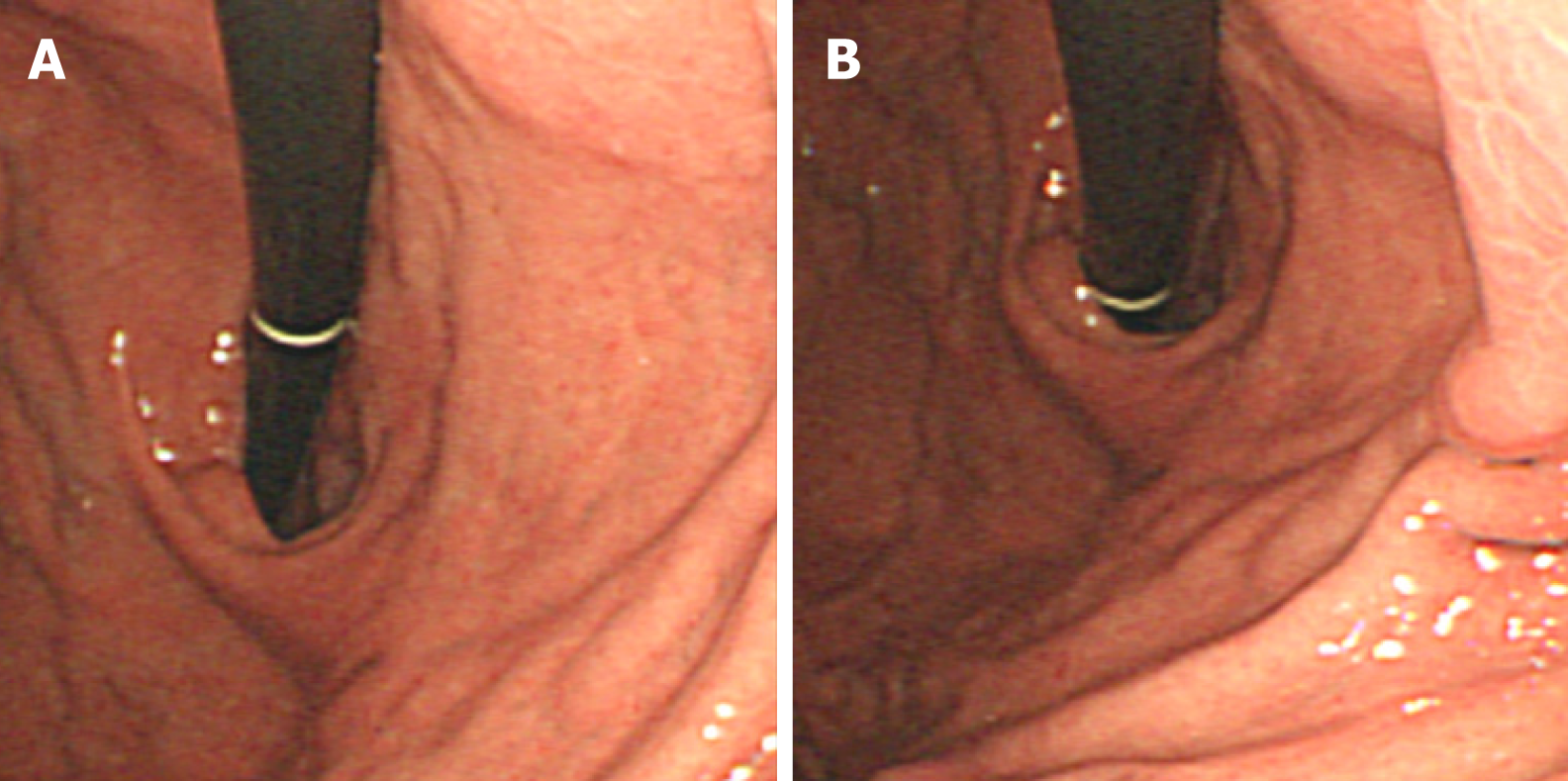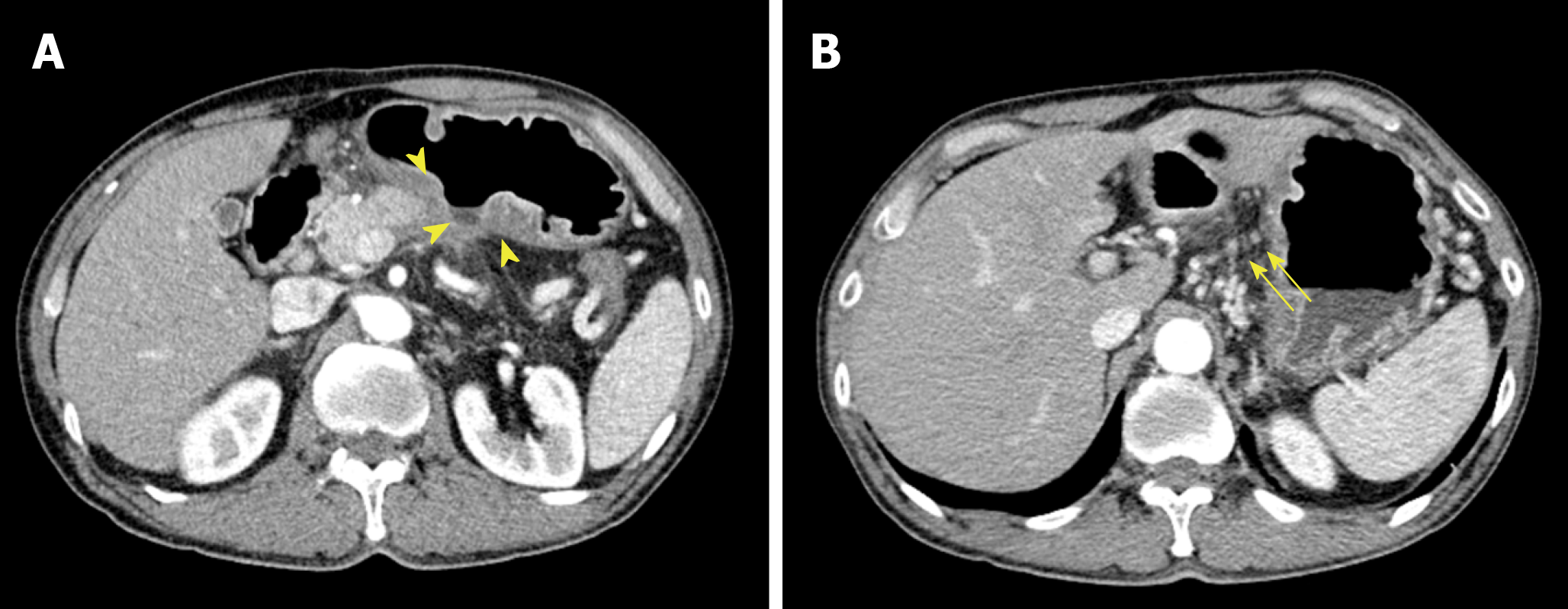Copyright
©The Author(s) 2019.
World J Clin Cases. May 26, 2019; 7(10): 1155-1160
Published online May 26, 2019. doi: 10.12998/wjcc.v7.i10.1155
Published online May 26, 2019. doi: 10.12998/wjcc.v7.i10.1155
Figure 1 Upper gastrointestinal endoscopy images.
This reveals a huge ulcer in the posterior wall of the stomach. The ulcer lesion was suspicious for Borrmann type II gastric cancer.
Figure 2 Contrast-enhanced abdominal computed tomography images.
A: A huge ulcer lesion with diffuse wall thickening was detected in the posterior wall of the lower body of the stomach (yellow arrow head); B: Multiple enlarged left gastric lymph nodes were noted (yellow arrow).
Figure 3 F-18 fluorodeoxyglucose positron emission tomography/computed tomography images.
A: The maximum intensity projection image shows uneven uptake on the stomach (black arrow); B: Axial scan shows increased uptake in the posterior wall of the lower body of the stomach (yellow arrow); C: Several enlarged hypermetabolic lymph nodes were seen at the left gastric chain (yellow arrow head).
Figure 4 Periodic acid-Schiff stain.
A, B: Multiple fungal hyphae with positive periodic acid-Schiff staining were observed (black arrow).
Figure 5 Follow-up upper gastrointestinal endoscopy images.
A, B: The follow-up endoscopic finding reveals marked improvement of previous mucormycosis lesion.
Figure 6 Follow-up contrast-enhanced abdominal computed tomography images.
A: Previous mucormycosis lesion in the posterior wall of the lower body of the stomach showed much-improved state (yellow arrow head); B: Only small left gastric lymph nodes was observed (yellow arrow).
- Citation: Song BI. F-18 fluorodeoxyglucose positron emission tomography/computed tomography image of gastric mucormycosis mimicking advanced gastric cancer: A case report. World J Clin Cases 2019; 7(10): 1155-1160
- URL: https://www.wjgnet.com/2307-8960/full/v7/i10/1155.htm
- DOI: https://dx.doi.org/10.12998/wjcc.v7.i10.1155










